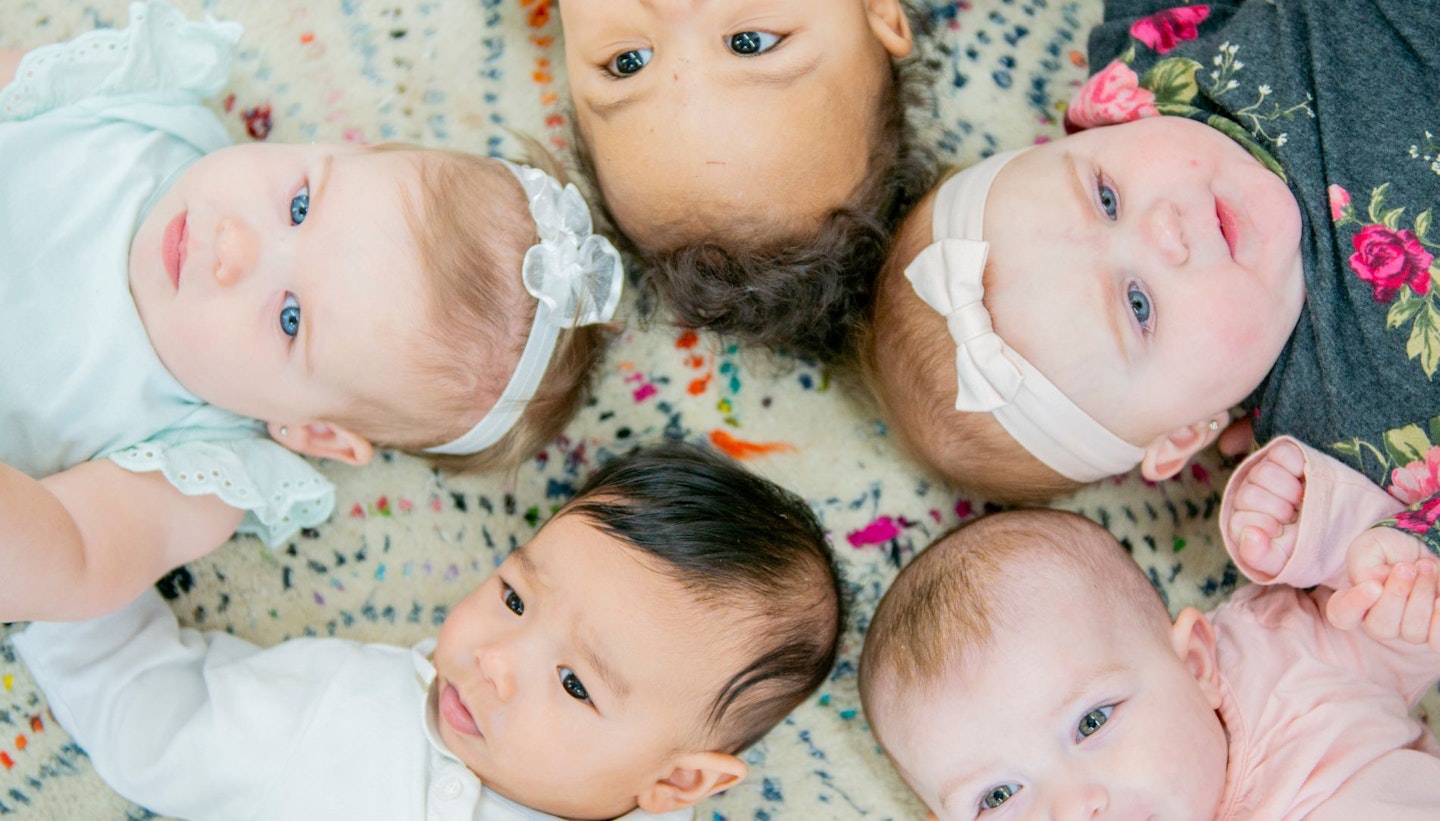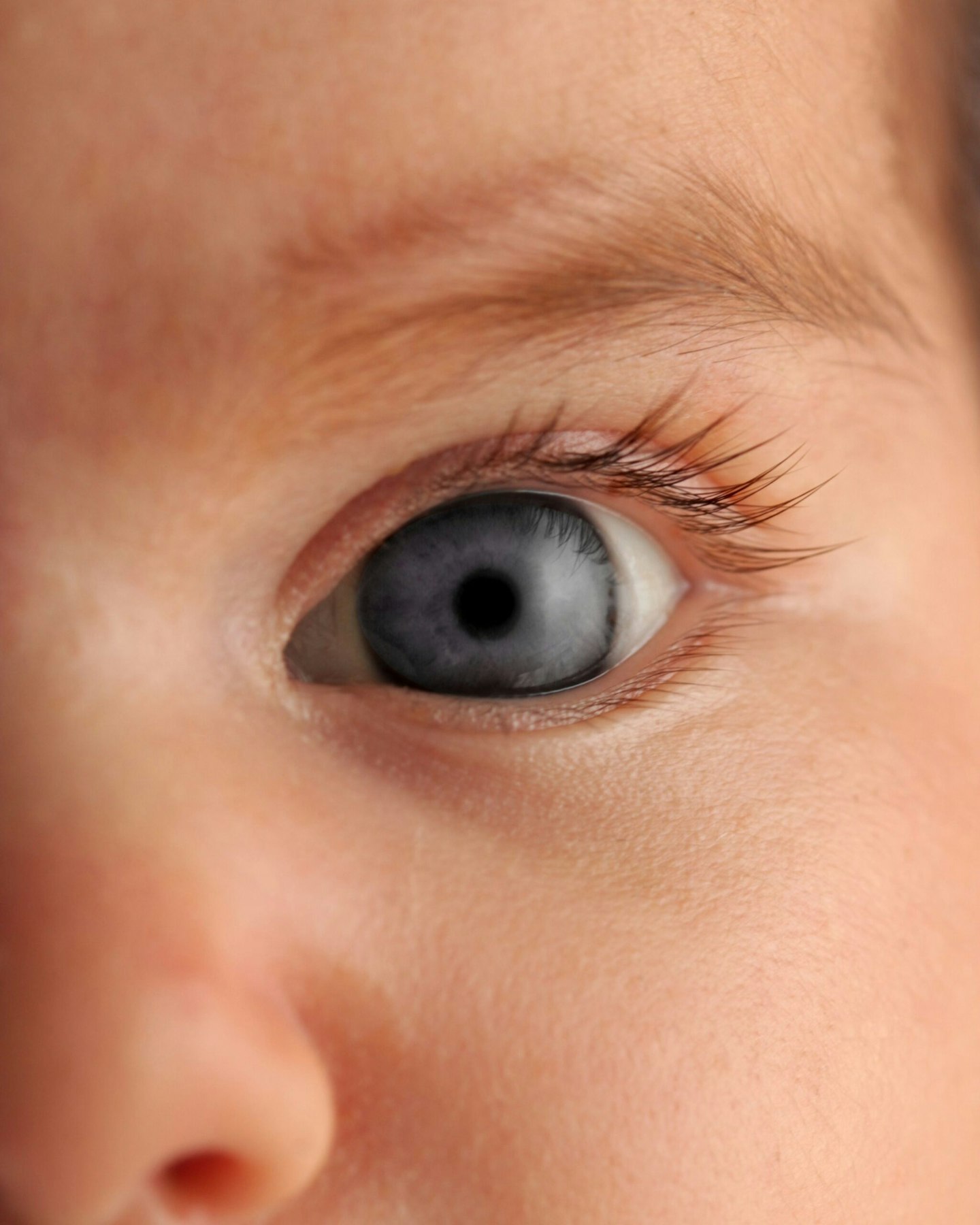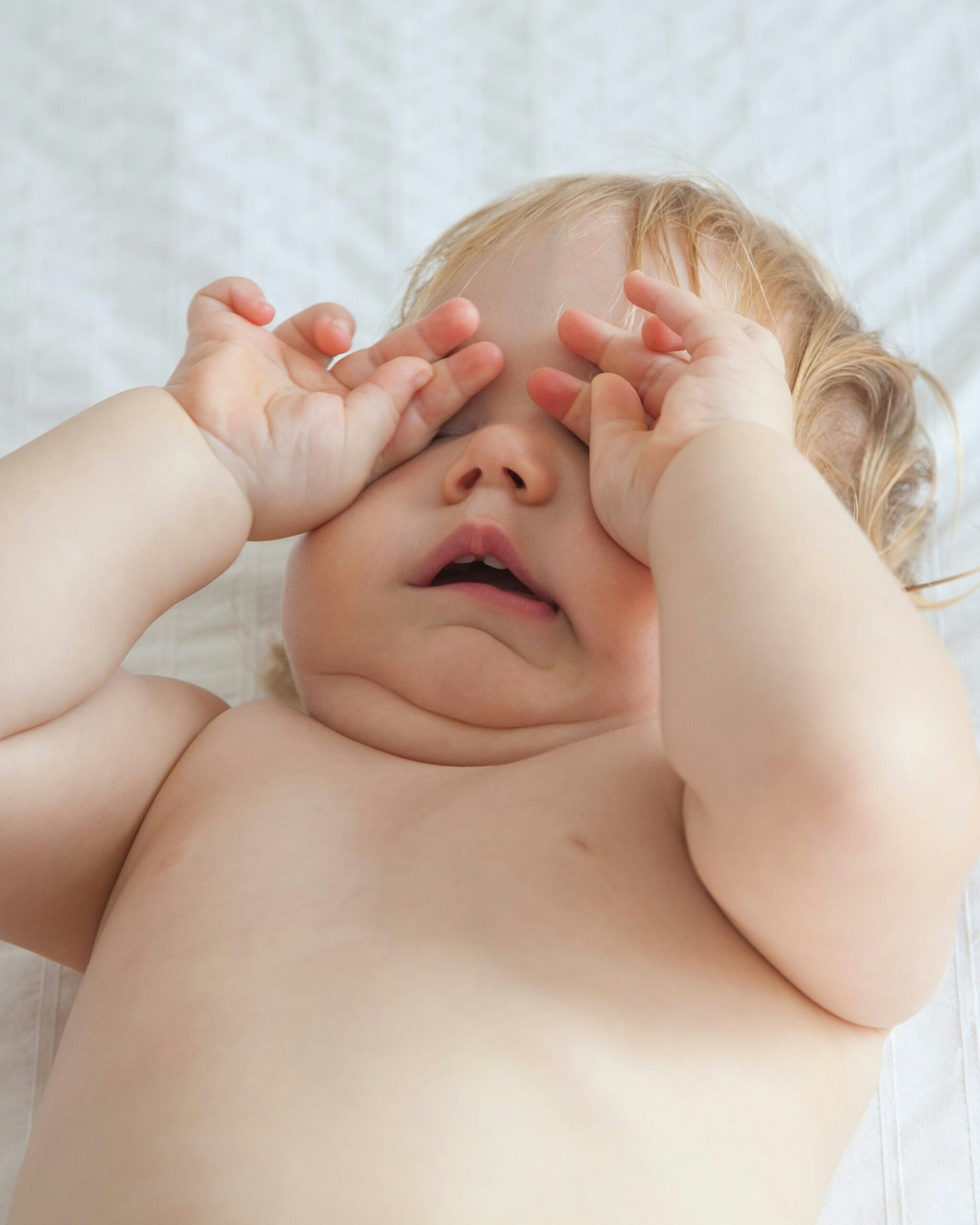If you're wondering when your baby will start seeing clearly, it's helpful to know that their vision develops gradually, much like other skills such as crawling and talking.
According to experts, newborns initially see only in blurred, high-contrast patterns and black-and-white. As their eyesight sharpens over the months, you'll notice them beginning to follow objects and engage more with the world around them.
Understanding these visual milestones is key for supporting your baby's cognitive development and choosing the right toys to enhance their progress. We’ve spoken with leading optometrists to outline the key stages of visual development in your baby’s first year, so you can better support their journey from fuzzy shapes to clear vision.
At what age can babies see clearly?
Like other aspects of early development, babies must learn how to see.
Malcolm Maciver from Leightons Opticians explains, "A newborn has little to no colour vision and has limited ability to see detail. In comparison to a traditional letter chart, their vision is around double the size of the largest letter on a traditional optical letter chart." He adds, "Vision improves quickly, with colour vision beginning to function around three to four months and normalising around a year. Eye coordination starts around six months and is typically normal by one year old. Most babies are slightly long-sighted and typically grow out of this over the first 10 to 12 years."
David Jameson, Optometrist and Learning & Development Specialist for Boots Opticians, adds, "At birth, a baby’s eyesight is quite different from that of an adult. During their first few weeks of life, a baby can only focus on objects that are within 20-30cm and is unable to distinguish between different colours.
A baby’s eyes and vision will continue to develop, and at around three to four months old, their colour vision will begin to function normally, and they will start to move their eyes to follow an object placed in front of them, such as a bright toy. They may also be drawn to light sources such as a window, without moving their heads.
At six months old, a baby’s vision will be much sharper, and their depth perception will start to develop, allowing them to judge distance and grasp objects."
When will my baby's eyes be checked?
David says "All babies’ eyes are checked at the hospital within 72 hours of birth to rule out any obvious physical problems. They are then checked again by their GP at around six to eight weeks old. During these checks, the doctor will shine a light into your baby’s eyes to see how their pupils react and to look for a red reflection. They may also conduct simple tests to see if your baby can pay attention to visual objects.”

Newborn vision development in the first three months
Your baby will begin to recognise your face within the first few weeks of being born but won’t be able to see much beyond that. At this age, their vision will only allow them to see between 8 to 12 inches in front of them.
They’ll be able to see light and recognise large objects, but that’s about it. Around three months after birth, they’ll be able to follow moving objects with their eyes (but don’t worry if they’re not doing that until a few weeks after the three-month point). A three-month-old’s light detection is 10 times that of an adult, so keep lights dim during naps and bedtime. It might be a good idea to invest in a toddler and baby night light. Making subtle changes to the decor of a room will also increase stimuli and help their eyes get the best start.
Baby vision development
Your baby will go through many sight development milestones during the first year of their life. Remember, each baby is different, so don’t worry too much if it’s a little different from the below.
Baby's vision at 4-6 months old
By now, your baby should be able to see more colours, and their eyes should be more coordinated, locating and following objects. This is when your child will start to recognise you and your partner and mirror your facial expressions—meaning you could beseeing their first smile.
Baby's vision at 7-9 months old
At nine months, your baby’s eye colour should have reached the hue it will stay for the rest of their lives, although you might see subtle changes in the next few months. Their vision will have gotten a lot sharper by now, and they should be better at judging distances.
Baby's vision at 10 months to one year old
At this age, your baby’s hand-to-eye coordination should be developing, meaning they’ll begin to crawl and may even pull themselves up and begin standing. They’ll have improved their ability to judge distance further and will start grabbing for things with their thumb and forefinger.

When do babies see colour?
When they’re first born, many babies cannot see any colour, but during the early months, their vision rapidly improves, and it is believed that they can see and recognise the full-colour spectrum by the time they reach five months old.
During these early months while their colour vision develops, it's likely they’ll engage more with black-and-white baby books and toys compared to brightly coloured toys, but don’t worry—they'll love these in a few months.
As their colour vision begins to develop, they start by seeing basic colours. After black and white, the first colour babies see is red, followed by green. At around two months old, they begin distinguishing different tones, and you can help encourage this development by showing them different colours and contrasting shades of colours daily.
While there is no set week or month that your baby will begin to see colour, it can happen anywhere between the two- and four-month mark for most babies.

Signs of colour blindness
Although you won't truly know what your child is seeing until they can talk with you, there are a few warning signs of colour blindness you might want to be aware of as your child gets older:
-
Using incorrect words and colours to describe things
-
Difficulty distinguishing between red and green
-
Using the wrong colours for things like grass and trees when colouring
-
Showing a lack of interest in colourful things or colouring books
-
Experiencing headaches when looking at red or green-dominated images
-
Signs of light sensitivity
-
Struggling to distinguish colours that are placed close together
If you have any concerns about your child's eye health, you should contact a doctor who will be able to help you work out what the problem could be.
Spotting problems with baby's vision
Throughout their younger years, babies will have a number of eye tests to ensure their vision is where it should be. However, it is still important to seek medical advice if there are signs of any problems or if you have any concerns. Although their hand-eye coordination won’t be perfect when still a baby, their eyesight should be pretty much developed by the age of one, and hand-eye coordination should start seeing improvements.
However, if it’s not improved over their first year, this could indicate a problem with their vision. Another sign is that the eyes do not point in the same direction. Again, this is normal in the first few months while their vision is developing, but from around three to four months old, their eyes should be aligned.
Other signs to look out for, typically in toddlers and older children, include:
-
Holding objects, such as a book, very closely
-
Sitting close to the TV
-
Straining their eyes to enable them to focus
-
Suffering from regular headaches
-
Rubbing their eyes a lot
Best foods for babies' vision development
A healthy diet is essential for children’s health, including their vision. A balanced diet and drinking enough water are crucial, but some specific foods are known for boosting vision. These include:
-
Fish
-
Leafy green vegetables
-
Eggs
-
Almonds
-
Citrus fruits
At a young age, these foods won’t be eaten whole, so making purées from these ingredients will help them eat these eyesight-boosting foods. Once old enough to eat whole foods, including these in their meals will continue to positively affect their eyesight.

What are some common eye infections in babies and how to prevent them?
David says, "Conjunctivitis is a common eye infectionthat can affect children, particularly under the age of five. It is caused by infection or allergies and is often referred to as ‘pink eye’ because the eye can appear pink or red. Infectious conjunctivitis is very contagious and can easily spread between other family members living in the same household.
To help prevent this, it is important to:
-
Keep the eyelids clean of discharge by gently cleaning the eyes with cotton balls soaked in warm water. Clean in one direction from the inner corner to the outer corner to help prevent the other eye becoming infected if it isn’t already.
-
Wash hands regularly, particularly after cleaning the eyes.
-
Wash bedding and towels regularly and separately from other washing.
Conjunctivitis in babies is more serious, and a small number of babies may develop conjunctivitis, either during delivery or after birth. If your baby’s eyes show any signs of redness, sticky discharge, excessive tearing, or swollen lids, it is crucial to see their GP for treatment as soon as possible, especially if they are under four weeks old."
When will my baby have their first eye test?
Malcolm said, "General screening for eyes will happen in the first few months of life by the GP or health visitor, with full eye checks being carried out if an anomaly is identified. The NHS covers eye testing for all children under 16, with all optometrists trained to examine eyes for children under two. However, some practices aren't equipped for testing younger children."
David emphasises the importance of children having their eyes checked regularly. Babies will have several check-ups on their eyes, with health and development reviews until they’re two years old.
“Their first Optician’s check should be before they start school (around four or five). Early detection of vision issues is vital since children may not realise they have a problem that could affect their development and education," David says.
When should I see a doctor if I'm worried about my child's eyesight development?
David says, "During the first few months of life, it’s normal for a baby’s eyes to drift or cross occasionally. By six months, their eyes should be aligned. Consult your GP or Optician if you notice persistent crossing, difficulty moving the eyes, shaking eyes, or excessive squinting. If you see a white reflection in your baby’s eyes, either in person or in photos, seek medical advice as it could indicate a problem."
Although serious vision problems are rare in childhood, the NHS provides routine eye tests for newborn babies and children to detect any issues early on.
About the experts
Malcolm Maciver is a seasoned optometrist at Leightons Opticians, renowned for his expertise in eye care and commitment to patient well-being. With years of experience in the field, Malcolm provides comprehensive eye examinations, personalised vision solutions, and exceptional patient care. His dedication to staying at the forefront of optometric advancements ensures that his patients receive the highest quality care for their vision and eye health needs.
David Jameson is an experienced optometrist and Learning & Development Specialist at Boots Opticians. Since qualifying as an optometrist in 2004, David has dedicated his career to advancing the field of optometry. In his current role on the Professional Capability team at Boots Opticians, he has been instrumental in shaping optometrist education since 2012. David has co-designed and delivered much of Boots Opticians’ Pre-registration Programme, ensuring the next generation of optometrists is well-prepared. Additionally, he serves as a Council Member for the College of Optometrists representing London, where he contributes to the ongoing development and regulation of the profession.
About the author
Anne Lora Scagliusi is a Senior Digital Writer at Mother & Baby. She is a Scotland-based journalist with over a decade of international writing experience, specialising in women’s health, maternal mental health, and wellness. Her work has been featured in Vanity Fair, Marie Claire, and Glamour and has appeared on several Vogue global editions. She is mum to a one-year-old bambino and lives between Italy and the UK.
